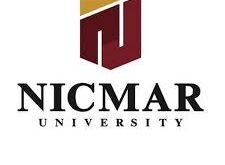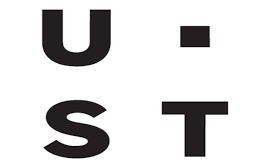- The loan outstanding per borrower stood at ₹38,005, about 91% of loans were being used for income generation purposes.
- SHG Bank linkage showed a positive growth, with the overall outstanding reaching ₹3.04 lakh crore for 84.9 lakh SHGs credit-linked.
- Active client base for the entire microfinance sector stood at 8.28 crore, and loan outstanding at ₹3,81,225 crore, at the end of FY 2024-25.
- Guardrails from SROs and industry leaders, and the lending restrictions, led to about 14% de-growth, the situation is expected to improve in the current financial year.
Hyderabad, October 10, 2025: For the microfinance sector, the total active client base stood at 8.28 crore, and a loan outstanding of ₹3,81,225 crore, at the end of FY2024-25 according to the Credit Information Companies data. This includes data from Banks, Small Finance Banks (SFBs), Non-Banking Financial Companies (NBFCs), NBFC-Micro-Finance Institutions (MFIs) and other lenders. The client base and loan outstanding for the sector declined by 13% and 14% respectively. The Self-Help Group (SHG) Bank linkage showed a positive growth, with the overall outstanding reaching ₹3.04 lakh crore for 84.94 lakh SHGs credit-linked, according to NABARD. There were around 143.3 lakh SHGs with 17.1 crore households being savings-linked under the SHG Bank linkage programme.
There were 13.99 crore loan accounts as on 31 March 2025, according to CRIF Highmark. The share of different institutions in the loan outstanding is as follows. NBFC-MFIs: ₹1,48,419 crore (39%), Banks: ₹1,24,431 crore (32%), SFBs: ₹59,817 crore (16%), NBFCs: ₹45,042 crore (12%), and Others: ₹3,516 crore (1%). The share of loan accounts of various institutions is as follows. NBFC-MFIs: 539 lakhs (39%), Banks: 466 lakhs (33%), SFBs: 216 lakhs (15%), NBFCs: 163 lakhs (12%), and Others: 15 lakhs (1%).
These are the findings of the Bharat Microfinance Report 2025, a comprehensive reference on microfinance prepared by Sa-Dhan in partnership with NABARD. The data in the report is captured from Credit Information Companies as well as information directly sourced from 203 Micro Lending Institutions (MLIs), which represent more than 98% MLI business in the country. The report includes geographical coverage, client outreach, income, expenditure and profitability of MLIs, their financial ratios, activities beyond credit. The report also has details on SHG Bank linkage, Credit Plus activities of the microfinance sector and the BC model of financing.
The Micro Lending Institutions (MLIs) are servicing over 6.27 crore active micro clients, with a total loan outstanding of ₹2,38,198 crore, including a managed portfolio of ₹72,930 crore. Business Correspondents contributed the most to the managed portfolio, at ₹53,287 crore. The loan outstanding per borrower of the reported MLIs works out to ₹38,005, the utilization of loan indicates that about 91% of loans were used for income generation purposes.
The microfinance sector continued to be a ‘feet on street’ model with 3.29 lakh personnel employed in 37,380 branches, at the end of FY 2024-25. Of this 64% of staff were in the field, the share of women in the MLI staff was 9%. The average number of active borrowers per credit officer has shown a decline and was at 299. The reduction in clients should help the MLIs to extend better services, although it adds to the cost of operation.
The NBFCs and NBFC-MFIs together contributed to 86% of the total client base and 84% of the outstanding portfolio of the MLIs. The MLIs with a portfolio size of more than ₹2,000 crore accounted for 81% of the client base and 85% of the loan portfolio. The top five states for microfinancing continued to be Bihar, Tamil Nadu, Uttar Pradesh, West Bengal and Karnataka.
Commenting on the report, Shaji KV, Chairman, NABARD said, “Microfinance has emerged as a cornerstone of India’s socio-economic transformation, fostering financial inclusion and empowering women, small and marginal farmers, artisans, and other vulnerable communities. Millions have been able to access timely and collateral free credit, enabling them to build sustainable livelihoods and enterprises. With data-driven insights, the Bharat Microfinance Report deepens our collective understanding of microfinance and highlights its role as a catalyst in advancing our shared national vision of Viksit Bharat.”
Jiji Mammen, Executive Director & CEO, Sa-Dhan said, “The most widely discussed issue contributing to the sector-wide stress is the overleveraging of credit, driven by increased borrower exposure and a higher number of lenders. Sensing it, the industry leaders and Self-Regulatory Organizations had come up with additional guardrails, the first set was issued in July 2024 and the next set in April 2025. These restrictions have brought controls in lending; these guardrails, along with the restrictions on lending put by lenders to MFIs, were also the reasons for the negative growth in the sector. The situation is expected to improve in the current financial year considering that 91% loans are being utilized for income generation purposes.”
The report was released on 10th October 2025, at Mumbai. The function was attended by industry leaders including PR Rajagopal, Executive Director, Bank of India; Sonali Shahpurwala, Head – Inclusive Banking, HSBC; Krishnan Venkatesh, Executive Vice President, HDFC Bank; Govind Narayan Goyal, Chief General Manager, State Bank of India; Ajit Velonie, Senior Director, CRISIL and Shaji KV, Chairman, NABARD, among others.
 Newspatrolling.com News cum Content Syndication Portal Online
Newspatrolling.com News cum Content Syndication Portal Online







